#campaniform
Text
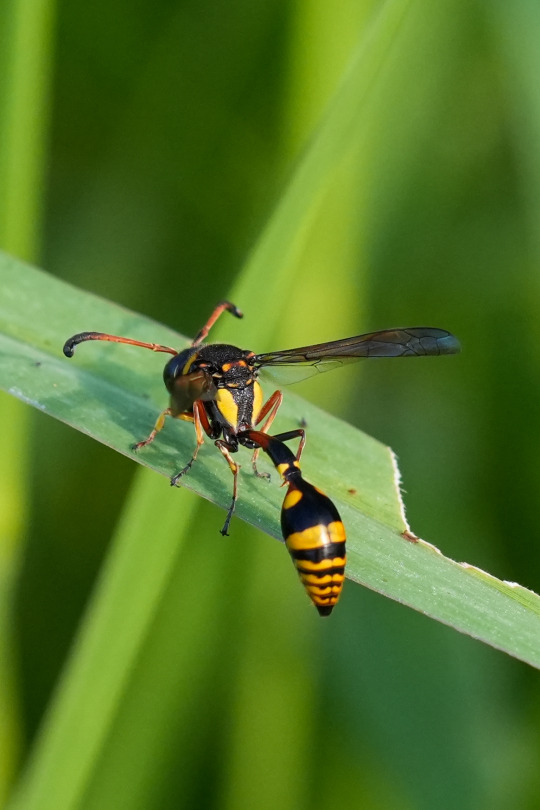
Yellow-and-black Potter Wasp (Delta campaniforme).
#ljsbugblog#bugblr#entomology#macro#insects#hymenoptera#vespidae#wasps#eumeninae#potter wasps#delta#delta campaniforme#yellow-and-black potter wasp
272 notes
·
View notes
Photo

#Digitalis #purpurea #estralotes #dedaleras #planta #flor #campaniforme #naturaleza #love #nature #slowlife https://www.instagram.com/p/CfMaQFYNWa4/?igshid=NGJjMDIxMWI=
0 notes
Text
... sur la table de la cuisine de sa mère-grand trônait un gobe-mouches
See on Scoop.it - Insect Archive
Tout le monde voit ce que c’est, un gobe-mouches ? Une espèce de récipient campaniforme, en verre, légèrement surélevé sur un petit trépied et doté dans sa partie basse d’une rigole que l’on peut remplir de n’importe quoi mais idéalement d’eau savonneuse. On place un appât au centre du bousin (une croûte de fromage, une miette de sucre, un noyau de pêche...), l’insecte insouciant se faufile sous la cloche, boulotte à s’en faire péter la panse et hop ! au moment de repartir au lieu de s’en aller pépouze en marchant voilà que par réflexe il s’envole, se bute sur les parois, tombe dans le liquide et se noie.
SeenThis - Nicole Garreau, 22.12.2023
-------
NDÉ
via https://www.facebook.com/nicole.garreau/
[Image] Gobe mouche ancien en verre - Broc23
http://www.broc23.com/objets/gobe-mouche-ancien-en-verre-1367
0 notes
Photo

VASO CAMPANIFORME de estilo Ciempozuelos (en Espacio Artístico A Cántaros) https://www.instagram.com/p/Co9NFjjjRMX/?igshid=NGJjMDIxMWI=
1 note
·
View note
Text
DIONISO E I PIACERI DEL VINO IN UN VASO ANIMATO
DIONISO E I PIACERI DEL VINO IN UN VASO ANIMATO
Da un cratere campaniforme, realizzato ad Atene intorno al 450-425 a.C., è tratta l’animazione su Dioniso realizzata dalla Panoply Vase Animation Project. Il vaso è stato decorato da un artista noto come il Pittore di Lycaon e questa tipologia ceramica è stata usualmente adoperata per mescolare insieme vino e acqua durante le feste del simposio. La grandezza delle pareti è particolarmente…

View On WordPress
0 notes
Text
Beaker meaning

#Beaker meaning plus#
As cerâmicas Campaniformes são ainda fortemente influenciadas pela maneira histórico-culturalista de ver e ler os objectos. KEYWORDS: Bell Beaker, Perdigões, Ditched Enclosure, South Portugal, Late Chalcolithic. In conclusion, it will be assumed that the bell beaker pottery is an addition to a social path already established, integrated into regional terms and with specific social roles, producing different spatial and contextual distributions, stressing that the phenomena cannot be understood as having the same specific roles in the social arena. It is also stressed the stylistic plurality in large ditched enclosures contrasting with a mono thematic tendency of the smaller sites. Perdigões will be integrated in the beaker regional context, again underlining the rarity of beaker decorated pottery in funerary contexts, contrasting with the «Horizonte de Ferradeira» and with what happens in other European regions. Beaker chronology and the spatial and contextual distribution of beaker materials in Perdigões will be discussed, underlining the absence of beaker pottery in contemporaneous funerary contexts. The minimum number of recipients, their stylistic classification as well as the description of the main decorative patterns, will be provided. Send us feedback.A synthesis of the available data regarding the presence of decorated Bell Beaker pottery in the ditched enclosures of Perdigões (Reguengos de Monsaraz, Évora) is presented. These example sentences are selected automatically from various online news sources to reflect current usage of the word 'beaker.' Views expressed in the examples do not represent the opinion of Merriam-Webster or its editors. 2021 What appears to be a specimen lung - or, some suggest, a dissolving skull - floats in the beaker’s light-diffusing liquid. 2022 The podcast’s cover image - Civeris and Taggart voguing inside a giant beaker - gives the impression that its hosts apply the scientific method to all things straight.Īlex Mcelroy, Vulture, 5 Oct. 2022 Compared with males who were still enjoying time with their mate, the partner-separated voles spent less time flailing and fighting their way out of the swim beaker and the black box.įlorence Williams, The Atlantic, 1 Feb. Jennifer Ouellette, Ars Technica, 16 Mar.
#Beaker meaning plus#
2021 The hands-on kit comes with a beaker, a flask, three test tubes, goggles, a ruler, an eye dropper, a funnel, a measuring spoon and a real working scale, plus stickers and experiment cards.ĭanielle Directo-meston, The Hollywood Reporter, Noodle stiction occurs as linear stage moves down the beaker. 2022 Plus the beaker-like vessel is adorable for flowers. 2022 With careful attention to detail, the team had to replace every beaker, tub of methylamine, round-bottom flask and more.Įthan Shanfeld, Variety, 3 Aug. Rachel Rothman, Good Housekeeping, 1 Sep. Recent Examples on the Web When your 6-year-old drops a reactor pod into the center chamber, the Hydro plungers shoot water through the tubes and into the chamber to reveal one of 35 beaker creatures.

0 notes
Photo
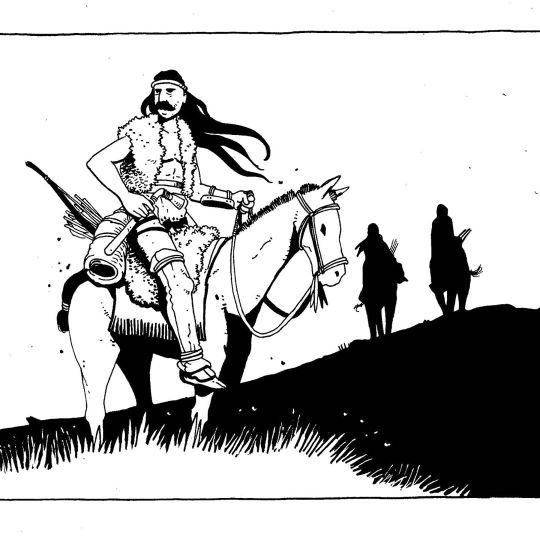
#inking #freelancer #illustration #ilustração #artistsoninstagram #drawoftheday #instacomics #nomad #campaniforme #bellbeaker #beakerfolk #indoeuropean https://www.instagram.com/p/CGxfQAljVfR/?igshid=1ouuodje0elg5
#inking#freelancer#illustration#ilustração#artistsoninstagram#drawoftheday#instacomics#nomad#campaniforme#bellbeaker#beakerfolk#indoeuropean
1 note
·
View note
Photo

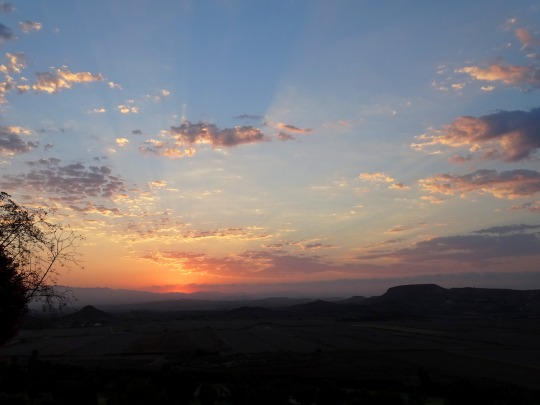
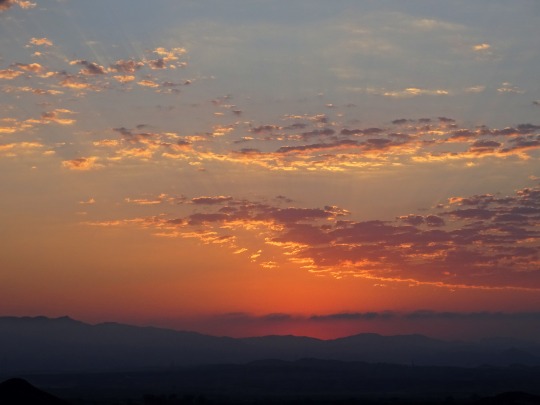



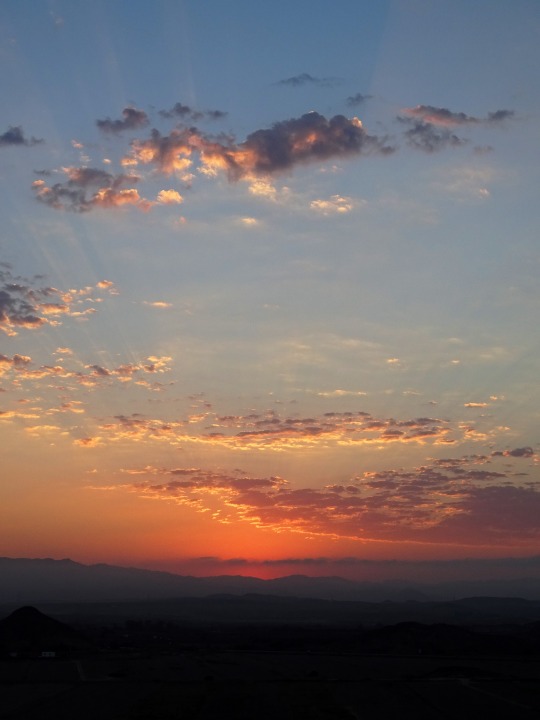

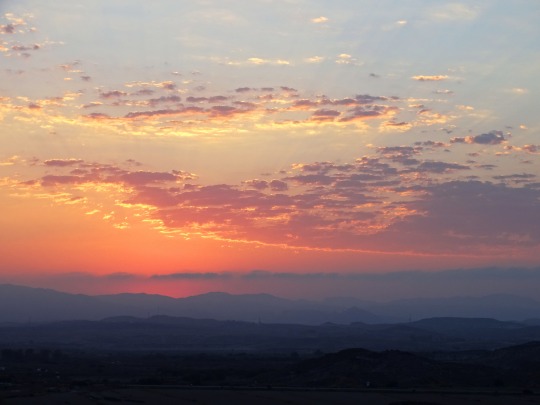

Summer Sunset, Mojácar (No. 5)
The Paleolithic Age of Almería was characterized by small nomadic and hunter-gatherer groups. The oldest Paleolithic site is Zájara Cave I (Cueva de Zájara I) in the Caves of the Almanzora (Cuevas del Almanzora).
The first villages and spaces dedicated exclusively to burials appear by the Neolithic Age, and even before the Upper Paleolithic Age. The cave paintings of the Cave of the Signs (Cueva de los Letreros) and twenty other caves and shelters of Los Vélez are dated to this era, and were designated a World Heritage site by Unesco in 1989.
In one of the shelters of the first settlers of the peninsula, the Coat of the Beehives (Abrigo de las Colmenas), there remains a human figure with arms outstretched holding an arc above its head. According to legend, this picture represents a covenant made by prehistoric man with the gods to prevent future floods. It is the earliest depiction of the Almerían Indalo, which was named in memory of Saint Indaletius, and means Indal Eccius ("messenger of the gods") in the Iberian language.
Over the years, the Indalo has become the best known symbol of Almería. Some see this figure as a man holding a rainbow, but it might also be an archer pointing a bow towards the sky. The Indalo lent its name to the artistic and intellectual movement of the Indalianos led by Jesús de Perceval and Eugenio d'Ors which was a movement of nostalgic attraction by the people of Mojácar. The people of Mojácar painted Indalos with chalk on the walls of their houses to guard against storms and the Evil Eye.
It was Luis Siret y Cels, an eminent Belgian archaeologist, who described the rich prehistoric wealth of Almería, particularly that of the Metal Age. Siret said that Almería was like "an open-air museum". Indeed, Almería is home to two of the most important cultures of the Metal Age in the peninsula: Los Millares and El Argar.
The earliest known city, Los Millares, dates to the Copper Age and is strategically located on a spur of rock between the Andarax River and the Huéchar Ravine (rambla de Huéchar), in the southern part of the province. It was a town of more than a thousand inhabitants, protected by three lines of walls and towers, and had an economy based on copper metallurgy, agriculture, animal husbandry, and hunting on a moderate scale. Furthermore, they constructed a large necropolis and exported metal figures and pottery to a large part of the peninsula.
The equally influential culture of El Argar appeared later, during the Bronze Age. They developed a characteristic form of pottery, the vaso campaniforme ("beaker") that spread throughout all of Northern Spain. Their cemeteries were more advanced with respect to the culture of Los Millares and they had diverse agricultural production and animal husbandry.
The rich customs and Fiestas of the denizens retain links deep into the past, unto the Moors, the Romans, the Greeks, and the Phoenicians.
During the taifa era, it was ruled by the Moor Banu al-Amiri from 1012 to 1038, briefly annexed by Valencia (1038–1041), then given by Zaragoza to the Banu Sumadih dynasty until its conquest by the Almoravids in 1091. Some centuries later, it became part of the kingdom of Granada.
Source: Wikipedia
#Mojácar#Andalusia#Province of Almería#Levante Almeriense#Spain#travel#España#Sierra Cabrera#moon#mountains#silhouette#sky#clouds#sunset#sundown#original photography#summer 2021#Southern Europe#southern Spain#landscape#countryside#view#orange#Iberia#colors#sky in fire#tourist attraction#landmark
1 note
·
View note
Photo
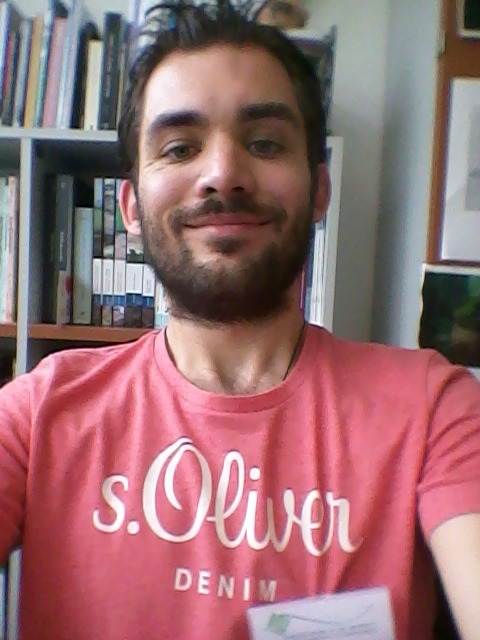
Three weeks ago, I organised a conference. This took its toll physically, as you can see, but fortunately I’m feeling better now :)
2 notes
·
View notes
Text
Eco-historias cotidianas: el lavavajillas

La historia del lavado de los platos se remonta a la aparición de las primeras vajillas. Hace más de 4.000 años que aparecieron las primeras vajillas campaniformes en Europa. Estas estaban constituidas en su práctica totalidad por vasijas de cerámica. Reservadas para la élite del momento, se convirtieron en una moda en las ceremonias sociales. Durante la edad de bronce, empezaron a fabricarse vajillas metálicas incluyendo una gran variedad de tamaños, formas y materiales (la mayoría eran de bronce, aunque también usaban oro y plata e incluso algunas con incrustaciones de piedras preciosas). Con el transcurso de los siglos aparecieron distintos tipos de vajillas, pasando por las de vidrio y porcelana hasta las que conocemos a día de hoy. Pero, ¿qué técnicas utilizaban para lavarlas?… Seguir leyendo
1 note
·
View note
Photo
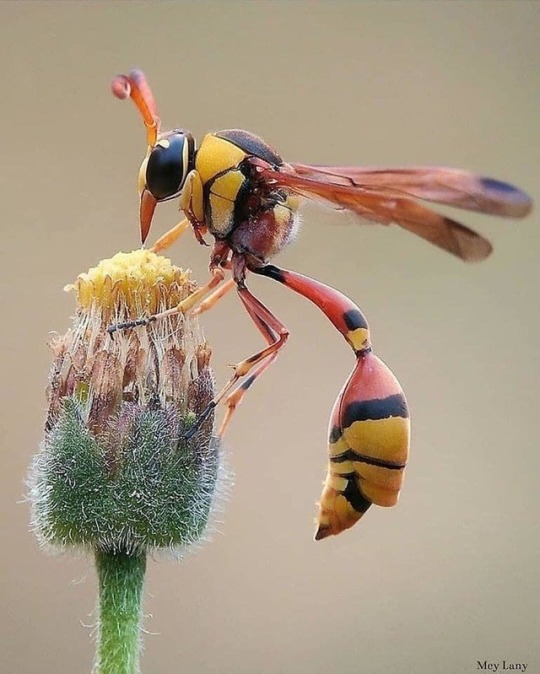
The beautiful Yellow Potter Wasp (Delta campaniforme)
Photo by Mey Lany
Every Thing Good in the World
1 note
·
View note
Text


03 – HISTORIA DEL ARTE – FICHAS (25-43) -
025 – Al tiempo, la danza, el movimiento rítmico, supuso una forma de comunicación corporal que servía para expresar sentimientos, o para ritualizar acontecimientos importantes (nacimientos, defunciones, bodas).
026 – En principio, música y danza tenían un componente ritual, celebrados en ceremonias de fecundidad, caza o guerra, o de diversa índole religiosa.
027 – Pronto el ser humano aprendió a valerse de objetos rudimentarios (huesos, cañas, troncos, conchas) para producir sonidos, mientras que la propia respiración y los latidos del corazón sirvieron para otorgar una primera cadencia a la danza.
028 – NEOLÍTICO – Este periodo – iniciado alrededor del 8,000 aC. en el Próximo Oriente – supuso una profunda transformación para el antiguo ser humano, que se volvió sedentario y se dedicó a la agricultura y la ganadería, surgiendo nuevas formas de convivencia social y desarrollándose la religión.
029 – En la pintura levantina – datada entre el Mesolíticoy el Neolítico –se dio la figura humana, muy esquematizada, con notables ejemplos en El Cogul, Valltorta, Alpera y Minateda. También se dio este tipo de pintura en el norte de África (Atlas, Sáhara) y en la zona del actual Zimbabue.
030 – La pintura neolítica solía ser esquemática, reducida a trazos básicos (el hombre en forma de cruz, la mujer en forma triangular).
031 – Son de destacar igualmente las pinturas rupestres del río Pinturas en Argentina, especialmente la Cueva de las manos.
032 – En arte mobiliar se produjo la llamada cerámica cardial, decorada con impresiones de conchas (cardium), y apareció el arte textil.
033 – Se manufacturaron nuevos materiales como el ámbar, el cristal de roca, el cuarzo, el jaspe, etc.
034 – En esta época aparecieron los primeros vestigios de poblados con una planimetría urbanística, destacando los restos hallados en Tell as-Sultan (Jericó), Jarmo (Irak) y Çatalhöyük (Anatolia).
035 – EDAD DE LOS METALES – La última fase prehistórica es la llamada Edad de los Metales, pues la utilización de elementos como el cobre, el bronce y el hierro supuso una gran transformación material para estas antiguas sociedades.
036 – En el llamado calcolítico surgió el megalitismo, monumentos funerarios en piedra, destacando el dolmen y el menhir, o el cromlech inglés, como en el magnífico conjunto de Stonehenge.
037 – En España se formó la cultura de Los Millares, caracterizada por la cerámica campaniforme y las representaciones humanas de figuras esquemáticas de grandes ojos.
038 – En Malta destacó el conjunto de templos de Mudajdra, Tarxien y Ggantija.
039 – En las islas Baleares se desarrolló una notable cultura megalítica, con diversas tipologías de monumentos: la naveta, tumba en forma de pirámide truncada, con cámara funeraria alargada.
040 – La taula, dos grandes piedras colocadas una vertical y otra encima horizontal; y el talayot, torre con una cámara cubierta de falsa cúpula.
041 – En la Edad del Hierro destacaron las culturas de Hallstatt (Austria) y La Tène (Suiza). La primera se dio entre los siglos VIII aC. y V aC., caracterizada por las necrópolis con tumbas de túmulo, con cámara mortuoria de madera en forma de casa, a menudo acompañada de un carro de cuatro ruedas.
042 – La cerámica era polícroma, con decoraciones geométricas y aplicaciones de adornos metálicos. La Tène se desarrolló entre los siglos V aC. y I aC., ligada a la cultura celta.
043 – Destacó por sus objetos en hierro (espadas, lanzas, escudos, fíbulas), con diversas fases de evolución (La Tène I, II y III), que al final de esta era recibió las influencias griega, etrusca y del arte de las estepas. [email protected]
1 note
·
View note
Photo

Examples of insects with halteres are houseflies, mosquitoes, gnats, and craneflies. Halteres oscillate rapidly along with the wings and operate like vibrating structure gyroscopes: any rotation of the plane of oscillation causes a force on the vibrating halteres by the Coriolis effect. The insect detects this force with sensory organs called campaniform sensilla and chordotonal organs located at the base of the halteres and uses this information to interpret and correct its position in space. Halteres provide rapid feedback to the wing-steering muscles, as well as to the muscles responsible for stabilizing the head. Insects of the large order Diptera (flies) have halteres which evolved from a pair of ancestral hindwings, while males of the much smaller order Strepsiptera (stylops) have halteres which evolved from a pair of ancestral forewings. . . . #entomologyart #entomology #insect #agri (at Chaudhary Charan Singh Haryana Agricultural University) https://www.instagram.com/p/CDV9FuWgu28/?igshid=97g5pci2iv1
0 notes
Photo
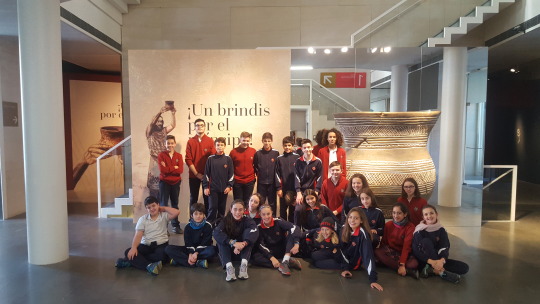

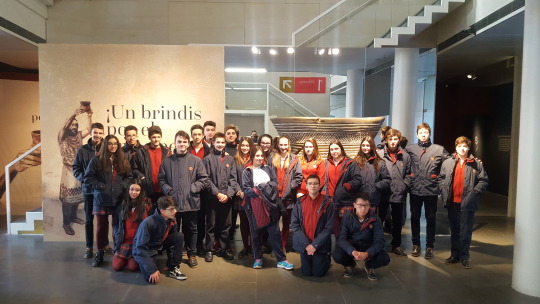
VISITA A LA EXPOSICIÓN EL VASO CAMPANIFORME
Todos los alumnos de ESO visitamos la exposición ``Un brindis por el príncipe´´ en el Museo de León. Esta exposición cuenta con numerosas piezas de la Edad del Cobre, como por ejemplo piezas campaniformes, joyería de oro, armas de cobre y cráneos de guerreros y mineros de este periodo. También había videos sobre cómo fabricaban cerámica o cómo sacaban los minerales de las montañas y los ríos.
En la entrada de la exposición había una copia de un vaso campaniforme gigante. Junto a las piezas de cerámica también había jarrones griegos del Museo Arqueológico de Madrid para ver la evolución en la utilización de la cerámica. En la última sala había una proyección de un enterramiento y la evolución del cuerpo hasta solo quedarse en huesos. Esta exposición nos ha parecido divertida e interesante ya que hemos descubierto más cosas sobre la Prehistoria.
Alonso Santos Alonso-Villalobos (1º ESO)
Paula Vaquera Blanco (1º ESO)
0 notes
Photo

“MUSEO DE ARQUEOLOGÍA DE ÁLAVA. CERÁMICA CAMPANIFORME. “La Chabola de la Hechicera”. (Elvillar – Álava). Calcolítico.” (686)
0 notes
Photo

#beakerfolk #bellbeaker #campaniforme #copperage #bronzeage #archer #archaeology #illustration #artoftheday #artistsoninstagram https://www.instagram.com/p/B5VOAabDqf8/?igshid=19k8mvzzpje6a
#beakerfolk#bellbeaker#campaniforme#copperage#bronzeage#archer#archaeology#illustration#artoftheday#artistsoninstagram
3 notes
·
View notes